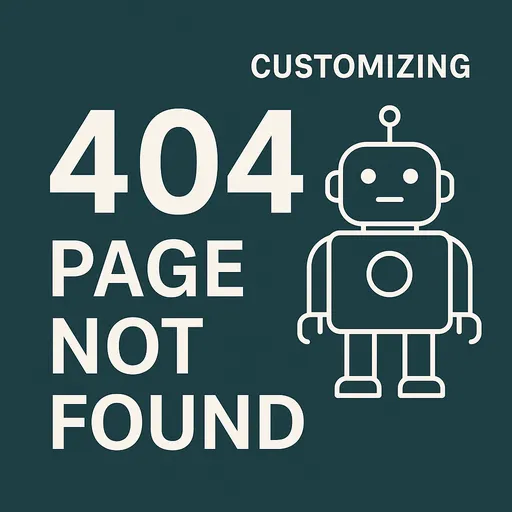While developing in Django, you often want to show a custom 404 page using code like raise Http404("Page not found.").
In this post, I will practically organize the causes of 404 errors, how to connect templates, and handling 403/500 errors.

1. Common Ways to Raise a 404 Error
I have classified the situations in which a 404 error occurs in Django, and I believe there are about four main cases.
1. raise Http404("Description")
This is the most basic method to explicitly raise a 404 error.
from django.http import Http404
def my_view(request):
if not condition:
raise Http404("Page not found.")
2. get_object_or_404()
This is a commonly used shortcut function in Django. It automatically raises a 404 error if the object does not exist.
from django.shortcuts import get_object_or_404
post = get_object_or_404(Post, pk=pk)
3. Exception Handling After Using Model.objects.get()
In this case, you also need to manually raise a 404 error.
from django.http import Http404
from django.core.exceptions import ObjectDoesNotExist
try:
post = Post.objects.get(pk=pk)
except ObjectDoesNotExist:
raise Http404("Post not found.")
4. When URLConf or View Does Not Exist
Unlike the previous cases, this is not a 404 raised intentionally by the developer, but when a requester accesses a non-existent URL, Django internally raises a 404 automatically.
2. How to Customize
Prerequisites
- The template name must be
404.html. - The following items must be set in
settings.py: DEBUG = FalseALLOWED_HOSTSmust be set- The
404.htmltemplate must be in a location where Django can find it.
Template Locations
| Location | Description |
|---|---|
project_root/templates/404.html |
The most common and stable location |
app_name/templates/404.html |
Possible, but requires APP_DIRS = True |
app_name/templates/app_name/errors/404.html |
Not automatically recognized, requires handler404 settings |
Example of Manual Connection via handler404
# views.py
def custom_404_view(request, exception):
return render(request, 'myapp/errors/404.html', status=404)
# urls.py
handler404 = 'myapp.views.custom_404_view'
3. Can 403 and 500 Errors Also Be Customized?
✔ Django allows customization of the following error pages as templates, in addition to 404:
| Error Code | Default Template Name | Description |
|---|---|---|
| 403 | 403.html |
Permission Denied |
| 404 | 404.html |
Not Found |
| 500 | 500.html |
Internal Server Error |
| 400 | 400.html |
Bad Request |
✔ The Basic Conditions Are the Same
- Templates will only apply if
DEBUG = False. - Templates must exist under
TEMPLATES['DIRS']orAPP_DIRS=True. - If necessary,
handler403,handler400, andhandler500can be manually registered to link to specific views.
Summary
| Item | Content |
|---|---|
When using raise Http404 |
Automatically renders 404.html template |
get_object_or_404() |
Automatically raises 404 if object is not found |
| Template Name | Must use fixed names like 404.html, 403.html, etc. |
| Directory Conditions | Must be within TEMPLATES['DIRS'] or APP_DIRS |
| DEBUG Condition | User templates are only applied when DEBUG = False |
| Advanced Use | Can connect to specific views using handler404, handler500, etc. |

There are no comments.